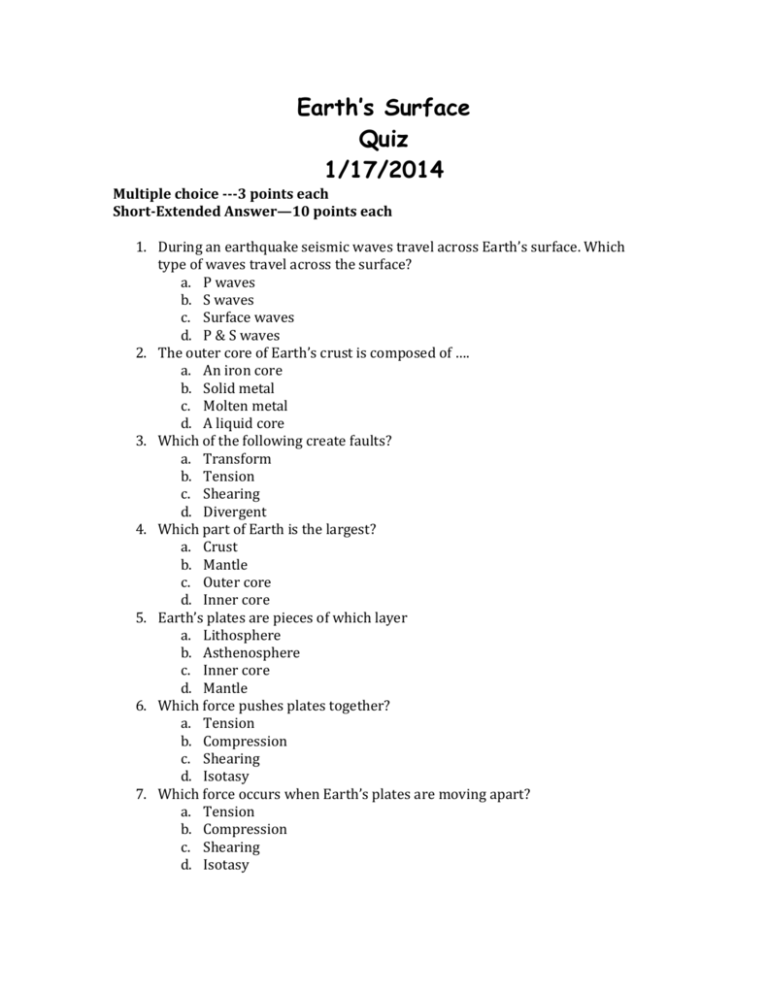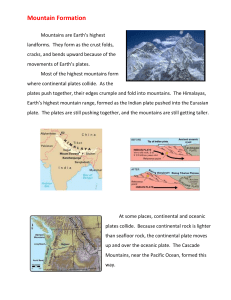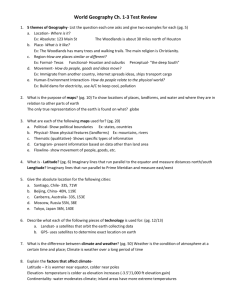Earth`s Surface Quiz 1/17/2014
advertisement

Earth’s Surface Quiz 1/17/2014 Multiple choice ---3 points each Short-Extended Answer—10 points each 1. During an earthquake seismic waves travel across Earth’s surface. Which type of waves travel across the surface? a. P waves b. S waves c. Surface waves d. P & S waves 2. The outer core of Earth’s crust is composed of …. a. An iron core b. Solid metal c. Molten metal d. A liquid core 3. Which of the following create faults? a. Transform b. Tension c. Shearing d. Divergent 4. Which part of Earth is the largest? a. Crust b. Mantle c. Outer core d. Inner core 5. Earth’s plates are pieces of which layer a. Lithosphere b. Asthenosphere c. Inner core d. Mantle 6. Which force pushes plates together? a. Tension b. Compression c. Shearing d. Isotasy 7. Which force occurs when Earth’s plates are moving apart? a. Tension b. Compression c. Shearing d. Isotasy 8. Which layer of Earth is thought to be solid and composed mostly of the metal iron? a. Crust b. Mantle c. Outer core d. Inner core 9. Which suggest that Earth’s lithosphere floats on the asthenosphere? a. Tension b. Compression c. Shear d. Isotasy 10. Which type of mountain forms because of compression forces? a. Fault-block mountains b. Folded mountains c. Upwarped mountains d. Volcanic mountains 11. Which type of mountains forms because forces inside? Earth push up overlying rock layers? a. Fault-block mountains b. Folded mountains c. Upwarped mountains d. Volcanic mountains 12. Which type of plate movement produces deep rifts such as rift valleys? a. Plates moving together b. Plates moving apart c. Plates sinking d. Plates sliding past each other Short—Extended Answer 13. I was looking at the different pictures of the mountains earlier this week. If I wanted to know which mountains were made by compression forces, what would I look for? 14. Describe how Earth’s inner core is different than its outer core. 15. Describe how rocks clues help us determine what is inside of the Earth. 16. Describe what will happen if the following crust (plate boundaries) meet. a. Continental—continental b. Oceanic—oceanic c. Oceanic-continental 17. Draw and label the interior of the Earth.







